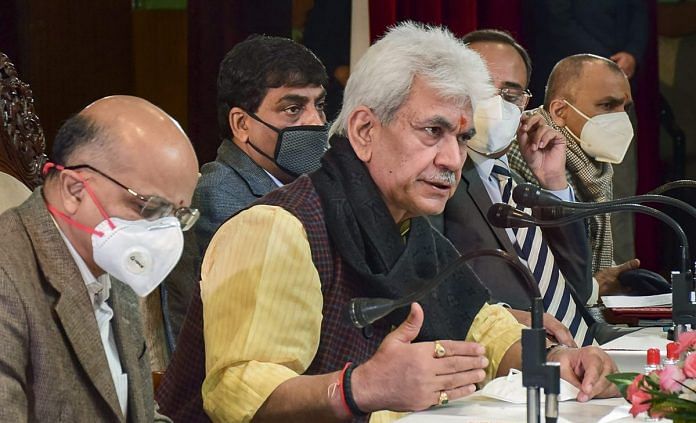Srinagar: The Jammu and Kashmir administration on Thursday announced a new industrial developmental scheme (IDS) with a total outlay of Rs 28,400 crore to encourage new investment and to take industrial development to the block level.
“In a major decision of far-reaching consequence, Government of India has approved a new Industrial Developmental Scheme for Jammu and Kashmir,” Lieutenant Governor Manoj Sinha announced at a press conference here.
“The scheme will go a long way in ushering an era of socio-economic development of the region and for catering to the aspirations of people,” he said.
Sinha said that this scheme is from the period of date of notification up to the year 2037 with a total outlay of Rs 28,400 crore.
He said that it is for the first time any industrial incentive scheme is taking development to the block level and added that it will promote far-flung areas of Jammu and Kashmir.
“The scheme will encourage new investment, substantial expansion and also nurture the existing industries in the Union territory. It will also provide employment to 4.5 lakh people besides leading to equitable, balanced and sustainable socio-economic development of the region,” the LG said.
He said that manufacturing and service sector units in the union territory will benefit and noted that the scheme visualises a larger role of Jammu and Kashmir in the Indian economy.
“The scheme will optimise utilisation of the local strengths of Jammu and Kashmir,” he added.
While giving details of the scheme, Sinha said it will give a major push to the economy of the region and provide huge opportunities of employment to the people of Jammu and Kashmir.
“The main purpose of the scheme is to generate employment beyond government jobs in both manufacturing and service sectors,” he added.
Sinha said that the scheme is being implemented with the vision that industry and service-led development of Jammu and Kashmir needs to be given a fresh thrust with emphasis on job creation, skill development and sustainable development by attracting new investment and nurturing the existing ones.
“The scheme will provide a major support to local industry besides creation of new business opportunities,” he added.
The scheme has four more incentives, the LG added.
Sinha said that capital investment incentive will be made available at the rate of 30 per cent in Zone A (urban) and 50 per cent in Zone B (rural) on investment made in plant and machinery (in manufacturing) or construction of building and other durable physical assets (in service sector).
“Units with an investment up to Rs 50 crore will be eligible to avail this incentive. Maximum limit of incentive is Rs 5 crore and Rs 7.5 crore in Zone A and Zone B respectively,” he added.
Similarly capital interest subvention is at the annual rate of 6 per cent for maximum seven years on loan amount up to Rs 500 crore for investment in plant and machinery (in manufacturing) or construction of building and all other durable physical assets( in service sector), he added.
Besides this, GST linked incentive is a financial incentive based on gross GST and this will incentivise output up to 300 per cent of the eligible value of actual investment made in plant and machinery (in manufacturing) or construction in building and all other durable physical assets (in service sector) for 10 years, he said.
However, the amount of incentive in a financial year will not exceed one-tenth of the total eligible amount of incentive, he added.
The LG further said that the working capital interest incentive is for all existing units at the annual rate of five for maximum five years and maximum limit of incentive is Rs 1 crore.
Giving details about key features, he said that the scheme has been made attractive for both smaller and larger units.
“Smaller units with an investment in plant and machinery up to Rs 50 crore will get a capital incentive up to Rs 7.5 crore and get capital interest subvention at the rate of 6 per cent for maximum seven years”, he added.
Also read: Andhra, MP lead states in reforms-for-loans but they all stay away from tough power sector






